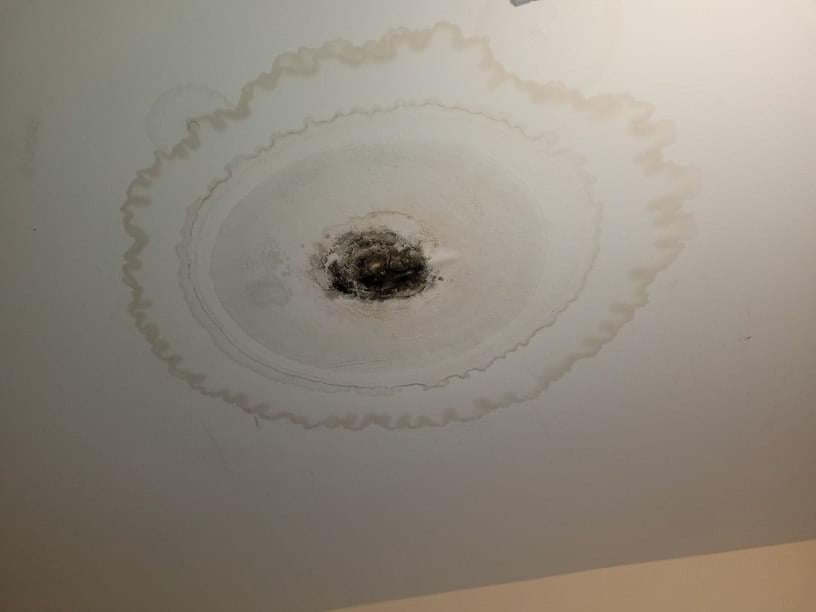They are making several good pointers relating to Hacks to detect leaks as a whole in this post just below.

Early discovery of leaking water lines can alleviate a possible catastrophe. Some small water leakages might not be visible.
1. Take A Look At the Water Meter
Every home has a water meter. Checking it is a guaranteed manner in which helps you find leakages. For starters, turn off all the water resources. Ensure no person will purge, utilize the tap, shower, run the washing device or dishwashing machine. From there, most likely to the meter and watch if it will change. Since no person is using it, there should be no motions. If it relocates, that suggests a fast-moving leakage. If you identify no changes, wait a hr or 2 and also inspect back once more. This means you may have a slow leak that can even be below ground.
2. Examine Water Usage
Analyze your water expenses and track your water usage. As the one paying it, you need to see if there are any kind of disparities. If you detect sudden changes, regardless of your intake coinciding, it indicates that you have leaks in your plumbing system. Keep in mind, your water expense ought to fall under the exact same array each month. An unexpected spike in your expense indicates a fast-moving leak.
A stable boost every month, even with the same behaviors, reveals you have a sluggish leak that's also gradually rising. Call a plumber to extensively check your building, particularly if you feel a warm area on your flooring with piping beneath.
3. Do a Food Coloring Test
When it comes to water intake, 30% comes from toilets. If the shade in some way infiltrates your bowl throughout that time without flushing, there's a leakage in between the container and also bowl.
4. Asses Exterior Lines
Do not fail to remember to inspect your outside water lines too. Test faucets by attaching a yard hose pipe. Must water permeate out of the link, you have a loosened rubber gasket. Replace this as well as make certain all connections are tight. If you've obtained an automatic sprinkler, it will assist get it expertly examined and kept annually. One tiny leakage can throw away tons of water as well as increase your water expense.
5. Evaluate and Analyze the Situation
Homeowners need to make it a routine to check under the sink counters and also also inside cabinets for any kind of bad odor or mold and mildew growth. These 2 warnings indicate a leak so prompt focus is called for. Doing routine examinations, even bi-annually, can save you from a significant trouble.
Check for stainings and also damaging as many pipes and devices have a life expectations. If you presume leaking water lines in your plumbing system, do not wait for it to escalate.
Early detection of leaking water lines can minimize a possible catastrophe. Some tiny water leaks might not be visible. Examining it is a proven means that helps you discover leaks. One tiny leakage can throw away bunches of water as well as spike your water bill.
If you suspect dripping water lines in your plumbing system, do not wait for it to rise.
WARNING SIGNS OF WATER LEAKAGE BEHIND THE WALL
PERSISTENT MUSTY ODORS
As water slowly drips from a leaky pipe inside the wall, flooring and sheetrock stay damp and develop an odor similar to wet cardboard. It generates a musty smell that can help you find hidden leaks.
MOLD IN UNUSUAL AREAS
Mold usually grows in wet areas like kitchens, baths and laundry rooms. If you spot the stuff on walls or baseboards in other rooms of the house, it’s a good indicator of undetected water leaks.
STAINS THAT GROW
When mold thrives around a leaky pipe, it sometimes takes hold on the inside surface of the affected wall. A growing stain on otherwise clean sheetrock is often your sign of a hidden plumbing problem.
PEELING OR BUBBLING WALLPAPER / PAINT
This clue is easy to miss in rooms that don’t get much use. When you see wallpaper separating along seams or paint bubbling or flaking off the wall, blame sheetrock that stays wet because of an undetected leak.
BUCKLED CEILINGS AND STAINED FLOORS
If ceilings or floors in bathrooms, kitchens or laundry areas develop structural problems, don’t rule out constant damp inside the walls. Wet sheetrock can affect adjacent framing, flooring and ceilings.
https://www.servicemasterbyzaba.com/blog/how-to-detect-water-leakage-in-walls/

I ran across that blog posting on Finding hidden leaks when doing a search on the web. Kindly take a moment to share this blog posting if you liked it. Many thanks for your time. Visit us again soon.
Professional plumbers, immediate response.